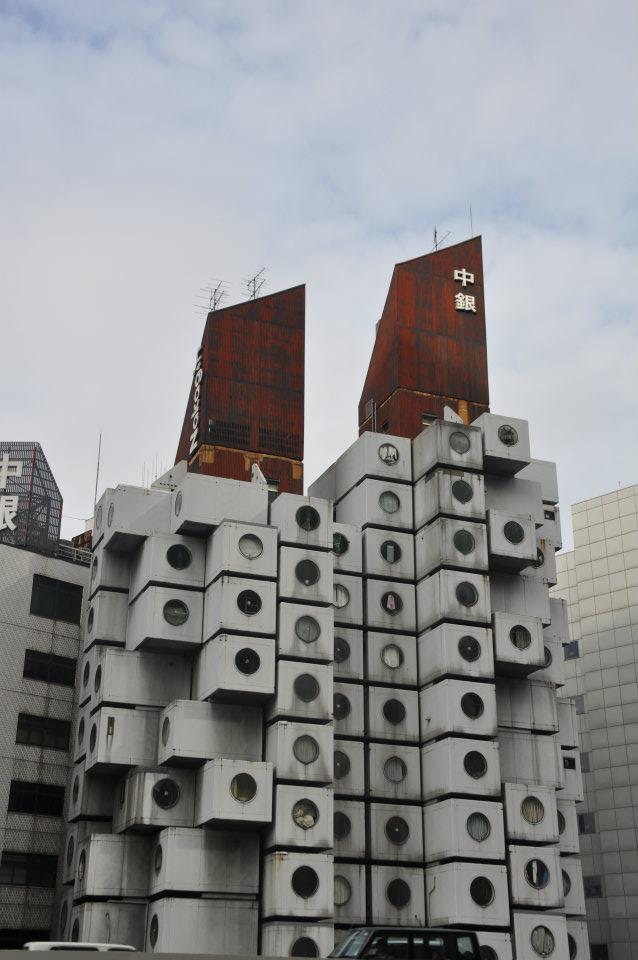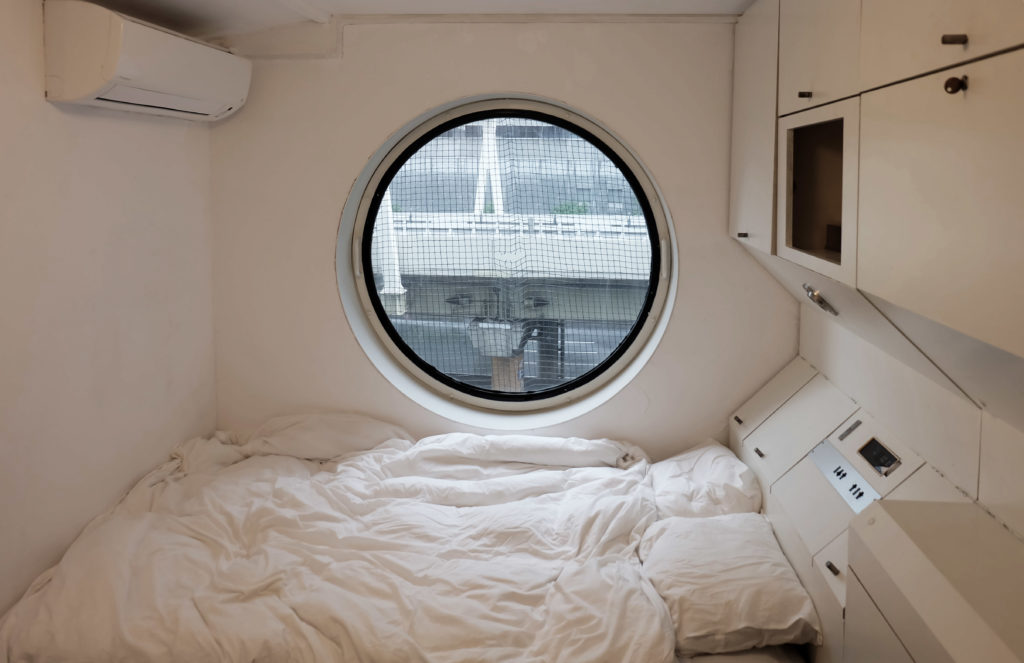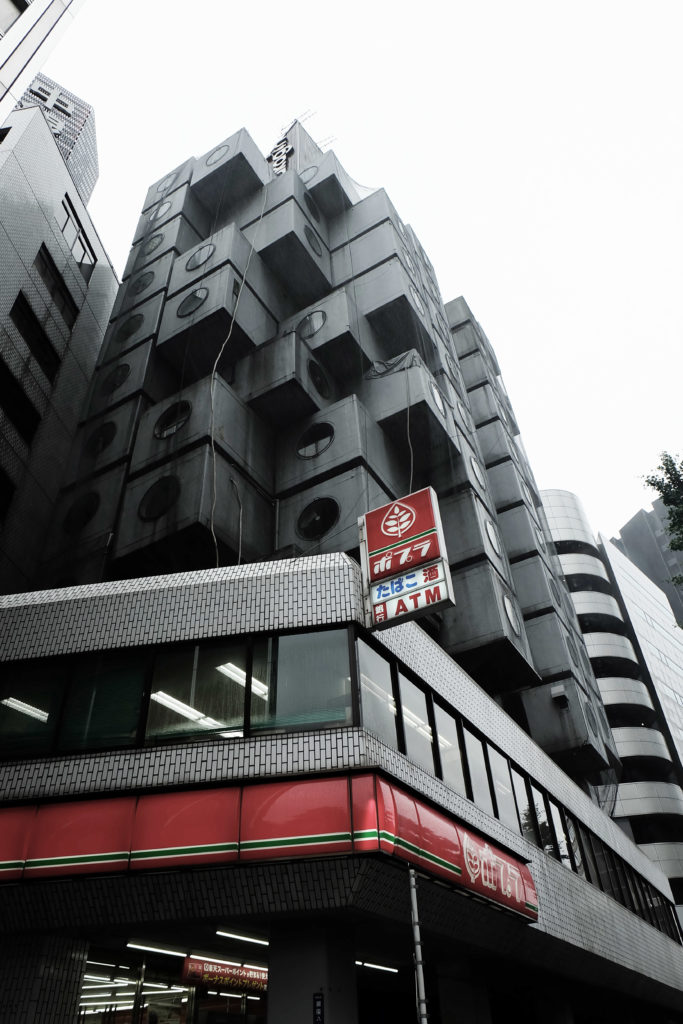The landmark Nakagin Capsule Tower has stood resolutely alongside the Tokyo Expressway in Shimbashi for nearly fifty years. Like a pair of low-resolution rocket ships, the complex appears an otherworldly, but somehow familiar relic of a visionary architectural movement. Once an emblem of modernity and technological advancement, it now sits largely vacant, in preparation for its final countdown.

Designed by acclaimed architect Kisho Kurakawa (1934-2007), the Nakagin Capsule Tower (1972) was a prototype for a new way of thinking about architecture. Rather than designing buildings that quickly became obsolete and were replaced in their entirety, the idea was to think about a permanent core structure with interchangeable, renewable parts – like the cells of an organism.
Originally termed Shinchintaisha (新陳代謝), Metabolism was a movement which first appeared in the late 1950s. Combining ideas of organic growth with architectural and urban scale structures, Kurokawa was amongst its core proponents. Although its application was more geared toward gigantic city-scale megastructures, the principles of organic growth were occasionally applied to smaller (more realizable) works. As was the case with the cell-like structure of the capsule tower.
As the world’s first example of capsule architecture built for functional purposes, the Nakagin was conceived as a pair of structural concrete towers to which 140 self-contained, 10 square-meter living capsules were bolted. A pied-à-terre for Tokyo salarymen (who would return to their remote family homes each weekend), the units were a self-contained exercise in minimal living. Every square millimeter of space was utilized with each capsule containing a small unit bathroom, built-in bed, and a functional wall containing the kitchenette, and a raft of technical appliances – as well as storage.

Resembling a body of living cells, by unbolting, removing and retrofitting the capsules each twenty-five or so years, outdated technology could be replaced, plans reconfigured, and finishes adjusted to reflect the changing times. In this way, the architecture could be less wasteful, and grow in parallel with the changing needs of society.
Despite the sustainable logic of the system, difficulties with ownership, the requirement for collective agreement, and access to funding meant this plan was never enacted. Ultimately this condemned the capsules to an inevitable decline. The residents have now agreed to sell and move on.
Shrouded in a makeshift net to prevent passers-by from falling debris, the towers now appear a little sad and stained. The glowing circular windows that animated the facade like a many eyed creature have gone dark as the final residents depart – draining the last vital signs. There is now a quiet acceptance that the Nakagin is on borrowed time. But it is not wholly an end.

A year after the completion of the Nakagin, Kurokawa produced a small vacation home for his family on the outskirts of Karuizawa. Using the capsule modules from the towers which he attached to a functional concrete core, Kurokawa was able to realise an interconnected version of the towers, expanding the living quarters to a considerably more generous 100 square meter dwelling (complete with a tea room pod – supposed to be his favourite spot).
The house – named Capsule K – has recently been restored by Kurokawa’s architect son, Mikio as a rentable accommodation for visitors to experience. Partially crowd-funded, the project will allow guests to “slowly immerse themselves” as though at home, so that they might better recognize the value of his father’s vision.
At the same time, crowdfunding efforts are underway to restore the capsules from the tower, and distribute these to international institutions such as the Pompidou in Paris. Any remaining capsules will function as rentable accommodation pods around Tokyo for those wishing to experience the capsule lifestyle.
As one of the few, remaining examples of Metabolist architecture, its disassembly will be an unfortunate loss to architectural history and to the Tokyo skyline. As sad as it will be, the renovation and distribution of capsules will help complete Kurokawa’s Metabolist vision – as an organic process of renewal, replacement and regeneration.











